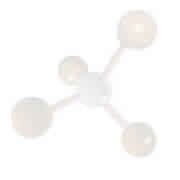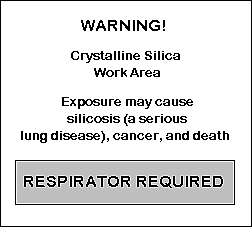|
Silica dust analysis | Silicosis prevention
|
MENU
CONTACT DETAILS
PO Box 260787
EXCOM 2023
Republic of South Africa

|
|
|
|

What is Silicosis
Silicosis is a potentially Fatal Lung Disease caused by overexposure to respirable Crystalline Silica.
Pneumoconiosis is the general term for lung disease caused by inhalation of mineral dust.
Silicosis is a Fibronodular Lung Disease caused by dust inhalation (crystalline silica dust).
Many workers all over the world are exposed to Crystalline Silica, and each year there are thousands of deaths resulting from Silicosis.
There is no cure for Silicosis; however, Silicosis completely preventable when and if employers, workers, and health professionals work together to reduce Silica exposures.
Occupational exposure at the workplace and inhalation of airborne crystalline silica can produce silicosis, a disabling, dust-related disease of the lungs. Any material that contains crystalline silica may be hazardous if during there use they produce any form of air-borne dust.
Exposure and Inhalation of silica dust and any dust that contains crystalline silica, has been linked to other diseases, such as lung cancer and tuberculosis.
Silicosis is probarbly the oldest occupational disease known to man that still poses seriuos health risks. Their are records dating from ancient Greece and Egypt showing Silicosis symptoms among quarry andstone workers.
Most dusty environments are a silicosis risk
Article on Dangers and Costs of Silicosis in Mining
Personal Air Sampling Equipment for Dust and Fume Sampling
Diagnosing Silicosis and other Lung Diseases
What is Crystalline Silica?
- Silica is any mineral having the form of one Silicon atom and 2 Oxygen atoms. SiO2.
- Free Silica is when mineral is not bound into any moleculer structure.
- Quartz a common form of Silica occurs virtually everywere in nature
- Crystalline silica is the major component of sand, quartz and granite rock and most soils as well as clays.
- Airborne crystalline silica occurs commonly in both work and non-work environments.
Activities such as a mining, rock-drilling, sandblasting, construction, foundry work, stonecutting, drilling,
quarrying, building and general construction work,
road work and road construction, cement products manufacturing, demolition operations, sweeping ,
or masonry, and tunneling operations all can create an airborne silica exposure hazard.
- Many minerals, including talc, calcium carbonate, coal, stone and gravel, may contain crystalline silica.
Symptoms of Silicosis
In early stages, there may be no symptoms of silicosis. The follows three typical patterns.
disease
- Acute Silicosis - occurs due to short-term exposure ( 1 to 3 years) to extremely elevated amounts of silica.
- Accelerated silicosis - This form develops at an average of 10 years of lower concentration of silica.
- Chronic silicosis - Simple and complicated silicosis develop after 20 years or longer of exposure to lower levels of silica.
Silicosis manifests itself with the following symptoms.
- Dyspnea (air hunger) or difficulty in breathing, especially after physical exertion
- Tachypnea or rapid breathing
- Persistent dry cough
- Hoarseness
- High blood pressure or pulmonary hypertension
- Confusion
- Tiredness, lethargy, or malaise
- Difficulty in sleeping
- Changes in breathing characteristics (decrease in rate and depth of breaths)
- Heart failure
- Cor pulmonale or enlargement of the right-side of the heart
If you work in a dusty environment and show any of these symptoms, It is advisable to seek a Medical chest examination, to check for Silicosis.
Respirable Silica in Air Sampling utilizing X-Ray Diffraction
Because of the obvious dangers involved with inhaling Silica Dust, it is important for a mointoring system to be inplace to ensure levels
of resperiable crystalline silica are within ( 0.4 mg per M3 for General Industry and 0.1 mg per M3 for mining. )
These levels are precribed in the Occupational Health and Safety Act 85 of 1993 and the Hazardous Chemical Substances Regulations Act of 1995.
Respirable dusts are sampled on pre-weighed sampling filters using a miniature cyclone at a constant flow rate of around 1.7 liters per minute.
The size of respirable particles may be up to 10 micrometers in diameter. Respirable Silica is typically analysed via 2 Methods X-Ray Diffraction (XRD) and Infra Red Spectrometry Of these 2 methods XRD is the more accurate and less suseptible to intefernces from other minerals that will be found in inhalable Dust. XRD can also distinguish the 3 main types of Silica: namely Tridymite, Crystabollite and Alpha Quartz on single 25mm Personal Air Sampling Filter.
This is important in foundries and other high tempreture environments were Quartz can at high tempretures denature to Tridymite and Crystabollite,
both of which are hazardous chemical substances. Recommendations to Limit Exposure to Silica and Hazardous DustThere are many specific and general recommendations to reduce exposure to respirable crystalline silica at the workplace. Workers can limit their exposure by being aware of and practicing the following:
- Identify through measurements where silica dust may be generated in the workplace.
- Use controls and containment methods, such as wetting dust producing areas at construction sites etc. thereby limiting worker exposure to hazardous dusts.
- Regularly maintain dust control and extraction systems to ensure they are working as well as possible.
- Conduct air monitoring to measure worker exposure.
- Install dust extraction equipment preferbly with bag filtration, so as not to create silica dust problem elsewere
- Were dust levels are high the use of respirators or personal filtration masks should be enforced.
- Warning signs should be placed at entrance to any area were high levels of dust are going to be encountered.
- Inform staff about hazards of respirable crystalline silica dust and any other hazardous dust they may encounter in the workplace
- Issue protective masks and respirators at ares were high dust expoisure is going to be encountered.

An Example of American Silica Occupational Health Warning Signs
|
|
|
|
Disclaimer: The liability of SMI ANALYTICAL is limited to the cost of analysis. SMI ANALYTICAL indemnifies
itself from any legal action which may be instituted against it due to supplied data. SMI ANALYTICAL accepts
no responsibility whatsoever for any results released, however used. No part of this document may reproduced
in part or in full unless permission from SMIANALYTICAL is granted in writing. This document may not be altered
in any way whatsoever and is printed without correction.
|
Silica and Analytical Chemistry Links
Silica and related Issues
Respiratory Diseases
Some Background about X-Ray Diffraction
University of Cambridge - Analytical Chemistry Journals
The Clay Minerals Society - Online Courses, Lectures, and Labs
Sheffield Chemdex is the directory of analytical chemistry on the World-Wide Web
Respirable Silica article from Mining Weekly
Personal Air Sampling Equipment for Dust and Fume Sampling
Diagnosing Silicosis and other Lung Diseases |
| Silica dust analysis, silica, dust, analysis, crystalline, amorphous, working environment, silicosis prevention, silicosis, prevention.
Silica dust analysis, silica, dust, analysis, crystalline, amorphous silica , working environment, silicosis prevention, silicosis, prevention, hazardous dust sampling, dust analysis, pollution in dusts, hazards in dusts, South Africa, SA,
|
|